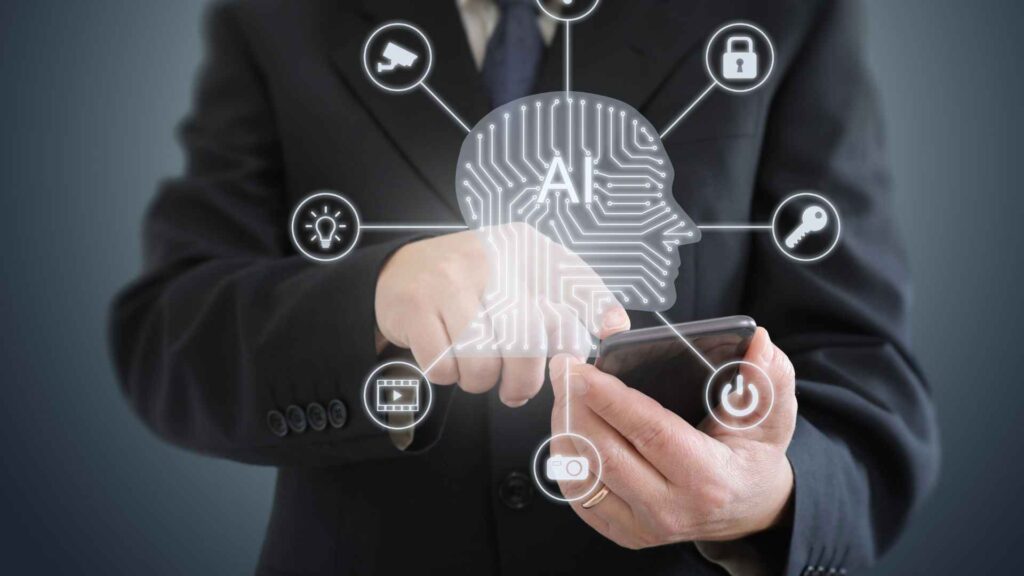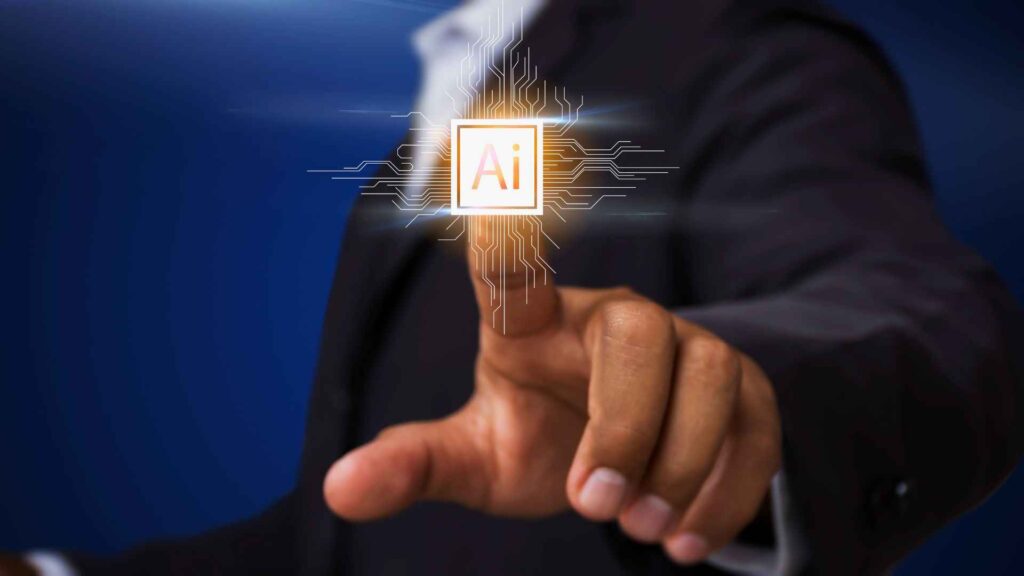AI-powered content creation makes it quicker and easier to create text, images, and multimedia. But to keep the content emotional, unique, and top-notch, human creativity in AI content creation is key!
While AI generates structured text, human AI content elevates it by adding nuance, empathy, and cultural understanding. The power of AI to human text brings together speed and creativity, creating content that grabs attention and truly connects with audiences. This collaboration of human insight and AI innovation is key to creating content that stands out in today’s digital landscape.
The Balance Between Human AI Content: Leveraging Strengths of Both

Human AI content seamlessly combines the efficiency of artificial intelligence with the creativity of humans, creating a powerful synergy in content creation. AI models like GPT-4 can process vast data, providing scalability and automation for tasks like blog posts and product descriptions. However, the true power lies in blending AI to human text, where AI handles structure, and humans refine and enhance it.
While AI excels in producing structured content, human creativity in AI content creation brings innovation, emotional depth, and cultural relevance. Humans add storytelling, personalisation, and originality that AI cannot. This balance ensures that content is not only efficient but also engaging and meaningful. By personalising content, injecting emotional nuances, and adapting to cultural contexts, humans elevate AI’s output, preventing predictable patterns and introducing new layers of creativity.
In conclusion, human AI content marries the speed of AI with human insight, resulting in high-quality, emotionally resonant, and culturally relevant content that stands out and connects with audiences effectively.
Injecting Creativity: From AI to Human Text Transformation
Transforming AI to human text requires blending the efficiency of AI with the creativity of human editors. This process involves adding personalisation, emotional depth, and cultural relevance, creating engaging and impactful content.
AI-generated content can often be generic, but humans enhance it by refining the tone and voice to suit the audience. Injecting emotional depth—such as humour, empathy, or excitement—adds relatability, ensuring the message connects with readers. Humans also adapt content to match cultural nuances and social trends, something AI often misses.
A key part of human creativity in AI content creation is breaking AI’s repetitive patterns, introducing unique ideas, metaphors, and creative approaches. Additionally, storytelling plays a crucial role, where human editors build compelling narratives, add personal insights, and craft emotionally engaging content. Fact-checking and accuracy are also essential to ensure the reliability of human AI content.
In conclusion, transforming AI to human text means blending the strengths of both—AI’s speed and structure with human insight, creativity, and emotional intelligence—to produce content that truly resonates with its audience.
Tools and Techniques for Blending Human Creativity with AI

Blending human creativity in AI content creation requires using AI tools that support productivity while leaving space for human input to ensure emotional depth and originality. AI tools like GPT-4 and Jasper AI generate initial drafts of blog posts, marketing copy, and even creative writing. These tools allow for efficient content generation, but human AI content requires personalisation to resonate with specific audiences.
In design, platforms like Canva and Runway ML offer templates and automated features, but it’s human designers who add artistic flair, making each project unique. Similarly, music tools like Amper Music and AIVA generate basic compositions, but human composers refine them with emotional nuances and originality.
For storytelling, tools like Sudowrite and Quillbot help overcome writer’s block, but human authors guide narrative arcs and add personal insights. In video production, tools like Adobe Premiere Pro with AI assist in editing, yet human input ensures storytelling impact and emotional engagement.
In summary, AI to human text transformation relies on tools that offer speed and efficiency, while human ingenuity adds creativity, depth, and a personal touch, resulting in content that both informs and inspires.
Case Studies: Successful Integration of Human Creativity in AI-Powered Content
1. The New York Times – AI-Assisted Journalism
Overview: The New York Times uses AI to automate data collection for election results and sports reporting.
Human Creativity: Journalists refine the AI-generated drafts, adding context, storytelling, and emotional depth, ensuring alignment with the paper’s standards.
Success: This blend of human AI content and AI has allowed the paper to provide timely yet richly engaging journalism.
2. Coca-Cola – AI in Marketing Campaigns
Overview: Coca-Cola uses AI to analyse consumer behaviour and generate marketing content ideas.
Human Creativity: Marketers refine AI suggestions by aligning them with brand values and emotional appeal, ensuring the content resonates.
Success: Campaigns like “Share a Coke” used human creativity in AI content creation to deliver personalised and emotionally engaging experiences globally.
3. Warner Music Group – AI and Music Creation with Endel
Overview: Warner Music partnered with Endel to create AI-generated soundscapes for relaxation and focus.
Human Creativity: Musicians fine-tuned the AI’s compositions, adding layers of emotional and musical depth.
Success: This approach demonstrates the power of AI to human text, blending AI’s efficiency with human artistry.
These case studies highlight how human AI content blends the efficiency of AI with human creativity, resulting in more personalised, emotionally resonant, and impactful content.
The Future of AI and Human Creativity in Content Creation

As the content industry evolves, the collaboration between AI and humans will create new possibilities for creativity, efficiency, and innovation. AI’s ability to process data, automate tasks, and generate structured content will remain invaluable, particularly for large-scale projects. However, human creativity in AI content creation will continue to be essential, offering emotional depth, cultural awareness, and originality that AI alone cannot achieve.
Key Trends Shaping the Future:
- Enhanced Personalisation and Engagement
AI will enable precise audience targeting through real-time data analysis. However, human AI content will ensure emotional resonance by tailoring the content to specific demographics, offering hyper-personalised experiences that blend AI’s insights with human storytelling. - Augmented Creativity
As AI evolves, it will serve as a creative assistant, helping generate ideas or drafts that humans can refine. This AI to human text process will allow creators to focus on refining impactful narratives and designs, with AI supporting rather than replacing human input. - Faster Production Without Sacrificing Quality
AI will speed up content production, allowing creators to concentrate on higher-level tasks such as strategy and emotional resonance. Human creativity ensures that content remains compelling and authentic, even in faster workflows. - Ethical Content Creation
Human oversight will become critical in navigating the ethical challenges posed by AI, such as bias or misinformation, ensuring that AI-generated content aligns with societal norms and values.
The future of AI-human collaboration in content creation will harness the strengths of both worlds: AI’s efficiency and human creativity. Together, AI and human ingenuity will create personalised, innovative, and emotionally resonant content, reshaping the content industry for the better.
Conclusion
Balancing AI with human creativity is essential for creating content that is both efficient and emotionally engaging. While AI excels at generating structure and automating tasks, it is human creativity in AI content creation that adds nuance, emotional depth, and originality.
This AI to human text process ensures content is not only functional but also resonant and meaningful. As AI continues to evolve, human AI content will shape the future by combining the best of both worlds, delivering innovation and authenticity to captivate audiences.
Read Also – 5 Big Business Management Trends You Need To Prepare
Know The Indian Legal Framework: IPC, CrPC, and CPC Explained
Political Theories Shaping the Constitutional Law of India

